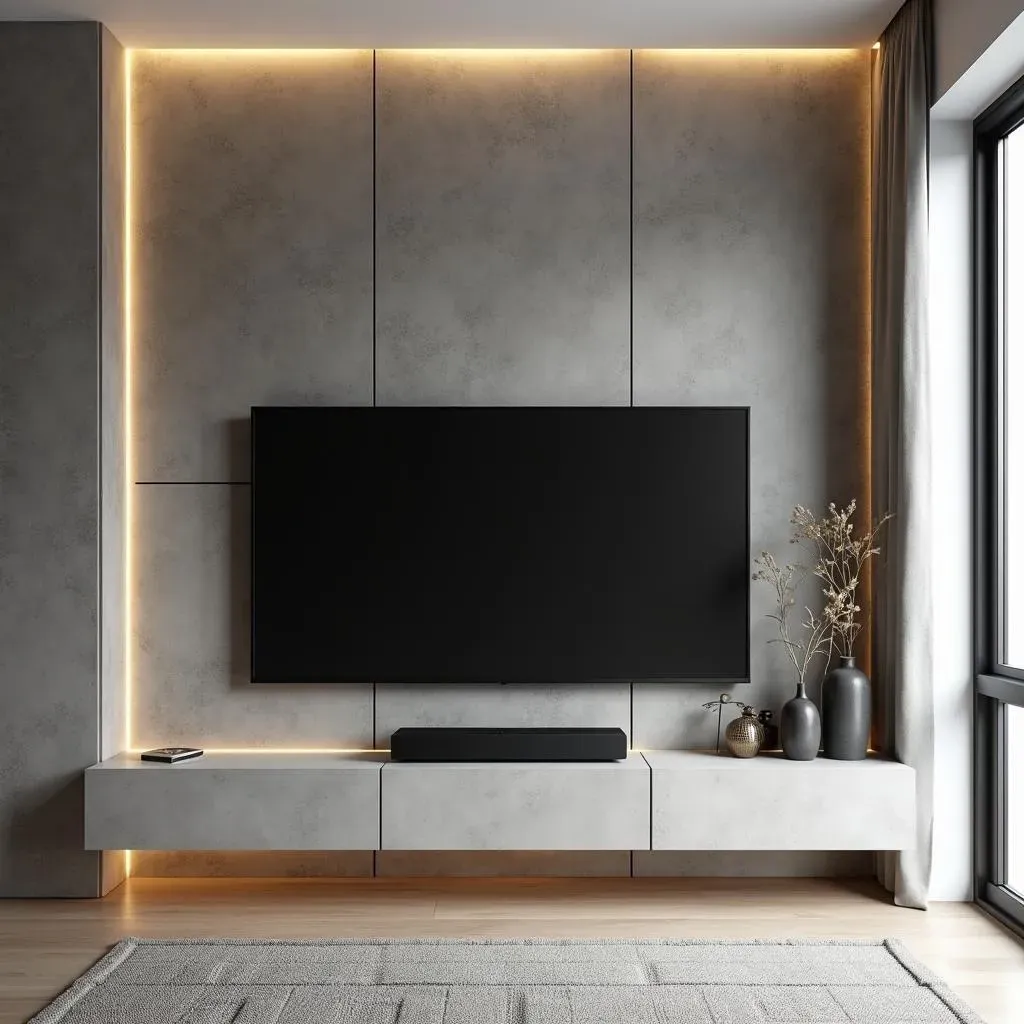Table of Contents
Tired of that blank space staring back at you from behind your TV? It's time to transform it into a focal point with captivating tv accent wall ideas. Forget boring, basic setups. This is about injecting personality, style, and a whole lot of visual interest into your living room. We're diving deep into a world of design possibilities, from sleek and modern to rustic and cozy, offering inspiration for every taste and budget.
Elevate Your Living Room: Stunning TV Accent Wall Ideas
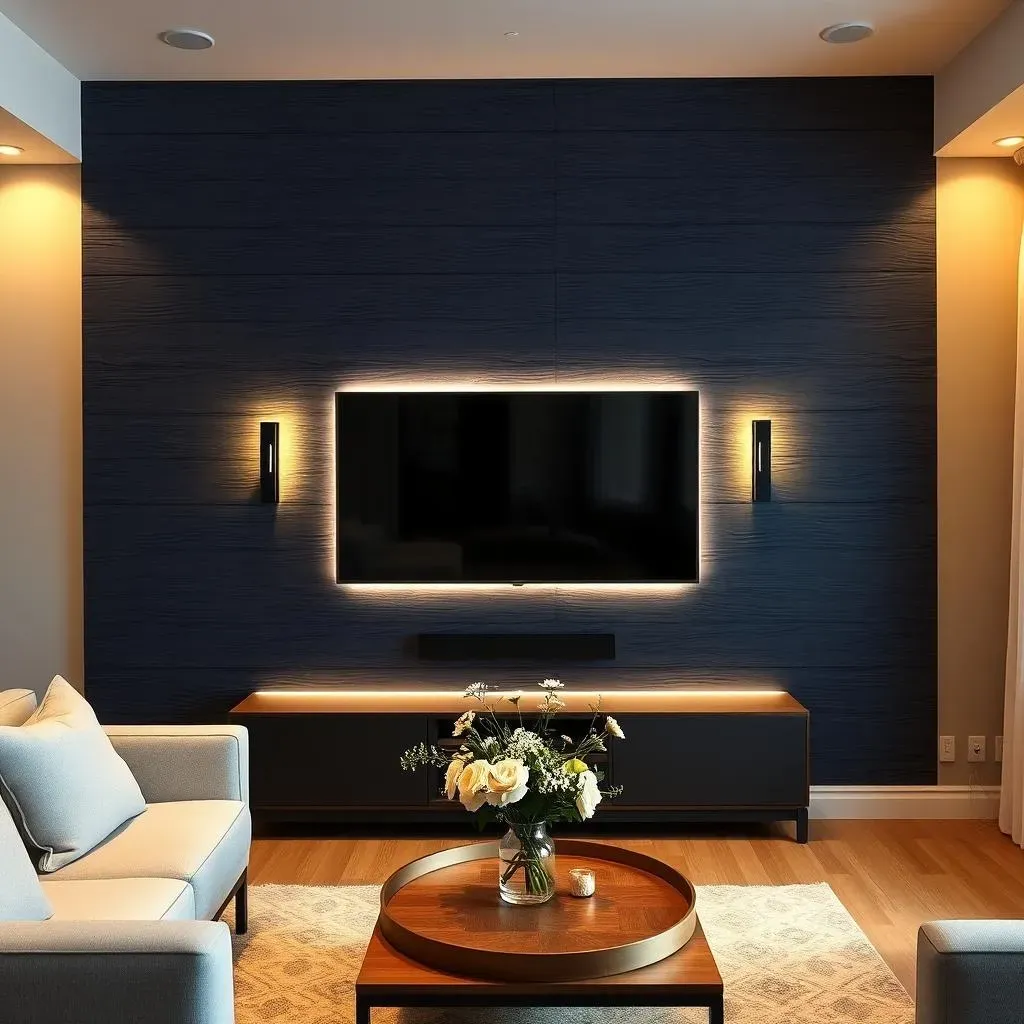
Elevate Your Living Room: Stunning TV Accent Wall Ideas
The Power of Texture and Dimension
Let's kick things off with texture. Forget flat, boring walls! Think about adding dimension to your TV accent wall to really make it pop. We're talking about shiplap, board and batten, or even a cool geometric design using wood panels. These aren't just aesthetic choices; they play with light and shadow, creating a dynamic backdrop that enhances your viewing experience. A textured wall adds depth and visual interest, making your TV area a true focal point.
Consider reclaimed wood for a rustic vibe, or go modern with sleek, painted MDF panels. The key is to choose a texture that complements your existing décor and adds a touch of personality. Don't be afraid to mix and match materials to create a truly unique look. For example, pairing a shiplap wall with a metal-framed TV can create a striking contrast.
Color Psychology: Setting the Mood
Color plays a HUGE role in setting the mood of your living room. Are you aiming for a cozy and inviting space or a sleek and modern one? Dark, saturated colors like navy blue or charcoal gray can create a dramatic backdrop that makes your TV seem to disappear, while lighter, warmer tones like beige or greige can create a more relaxed and inviting atmosphere.
Don't underestimate the power of contrast! A bold, colorful accent wall can add a pop of energy to a neutral room, while a subtle, monochromatic scheme can create a sense of calm and sophistication. Think about how the color of your accent wall will interact with the rest of your furniture and décor. Pulling colors from existing artwork or accessories can help create a cohesive and harmonious look.
Strategic Lighting: Highlighting Your TV
Lighting is the unsung hero of any good design, and it's especially important for a TV accent wall. Think about incorporating ambient lighting to create a warm and inviting glow, as well as task lighting to highlight specific features of your wall. LED strip lights are a great option for adding a subtle, modern touch, while sconces or spotlights can be used to draw attention to textured elements or artwork.
Avoid harsh, direct lighting that can cause glare on your TV screen. Instead, opt for soft, diffused lighting that will create a more comfortable and enjoyable viewing experience. Dimmable lights are a great way to adjust the lighting to suit your mood and the time of day. Consider installing smart lighting that can be controlled with your voice or a remote.
Lighting Type | Effect | Best Use |
|---|---|---|
LED Strip Lights | Subtle glow, modern touch | Behind TV, under shelves |
Sconces | Highlight texture, add warmth | Flanking TV, beside artwork |
Dimmable Lights | Adjustable brightness, mood control | Overall room lighting |
DIY TV Accent Wall Projects: BudgetFriendly Ideas
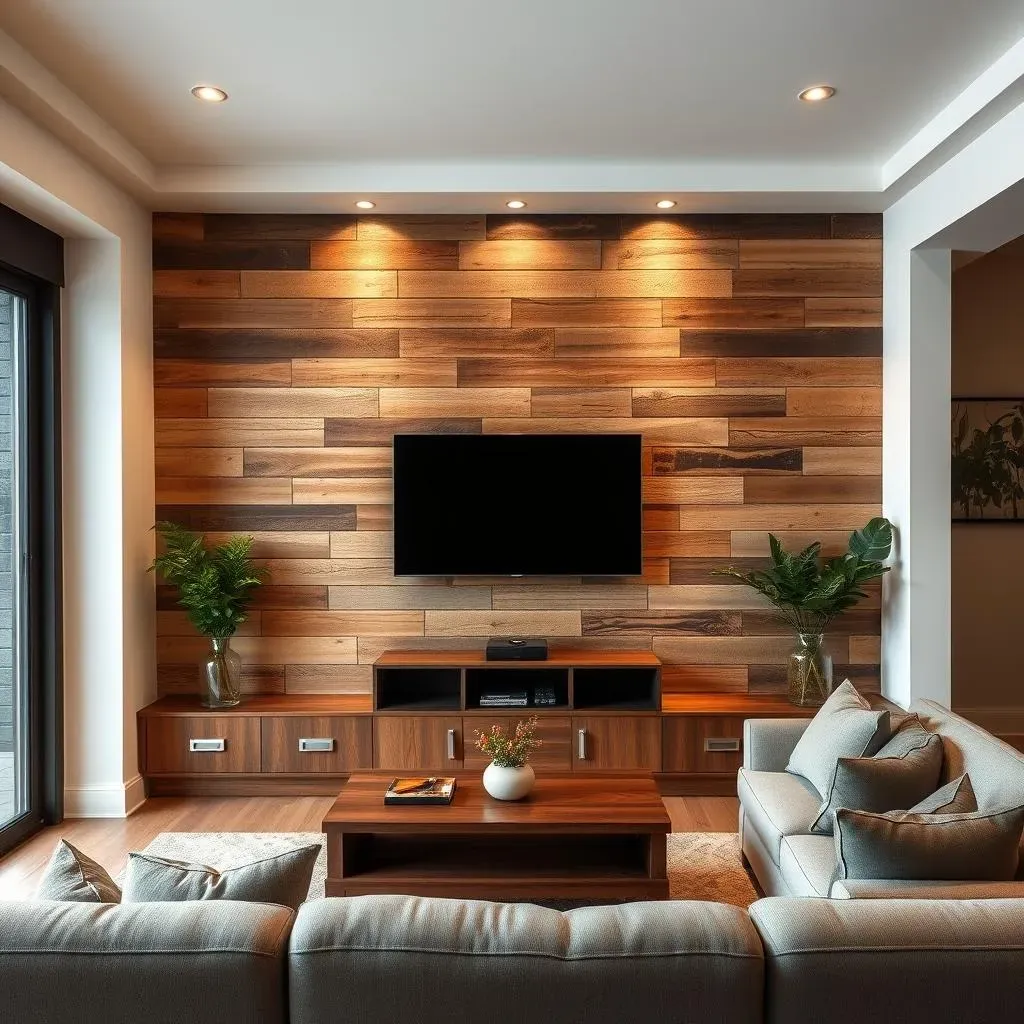
DIY TV Accent Wall Projects: BudgetFriendly Ideas
Pallet Wood Paneling: Rustic Charm on a Dime
Alright, let's talk budget-friendly! One of my absolute favorite DIY TV accent wall projects involves repurposing pallet wood. Seriously, you can score pallets for free from local businesses – just ask! With a little elbow grease, some sanding, and a coat of stain, you can transform those rough-hewn planks into a stunning, rustic accent wall. The variations in the wood grain and color add so much character, and it's a fantastic way to add warmth and texture to your living room without breaking the bank.
Plus, think about the satisfaction of knowing you created something beautiful from something that was destined for the landfill. That's a win-win in my book! You can arrange the pallet wood in a classic horizontal pattern, get creative with a herringbone design, or even mix and match different wood tones for a more eclectic look. Don't be afraid to experiment and let your personality shine through!
Wallpaper Wonders: Instant Transformation
If you're looking for a quick and relatively inexpensive way to create a DIY TV accent wall, wallpaper is your best friend. Gone are the days of fussy floral patterns (unless that's your thing, of course!). Nowadays, you can find a huge variety of wallpaper designs, from geometric prints and textured patterns to faux brick and wood looks. The best part? Many wallpapers are now peel-and-stick, making installation a breeze. No messy glue or complicated tools required!
Consider using a bold, graphic wallpaper to create a statement wall, or opt for a more subtle, textured wallpaper to add depth and dimension. You can even use wallpaper to mimic the look of more expensive materials, like stone or marble, without the hefty price tag. Don't be afraid to get creative with your wallpaper placement. You can cover the entire wall, create a focal point behind your TV, or even use wallpaper to frame your TV and create a gallery-like effect.
Project Idea | Estimated Cost | Skill Level |
|---|---|---|
Pallet Wood Wall | $50-$100 (depending on stain and sealant) | Intermediate |
Peel-and-Stick Wallpaper | $30-$80 (per roll) | Beginner |
Painted Geometric Design | $20-$50 (paint and tape) | Beginner/Intermediate |
Modern TV Wall Design: Integrating Technology Seamlessly
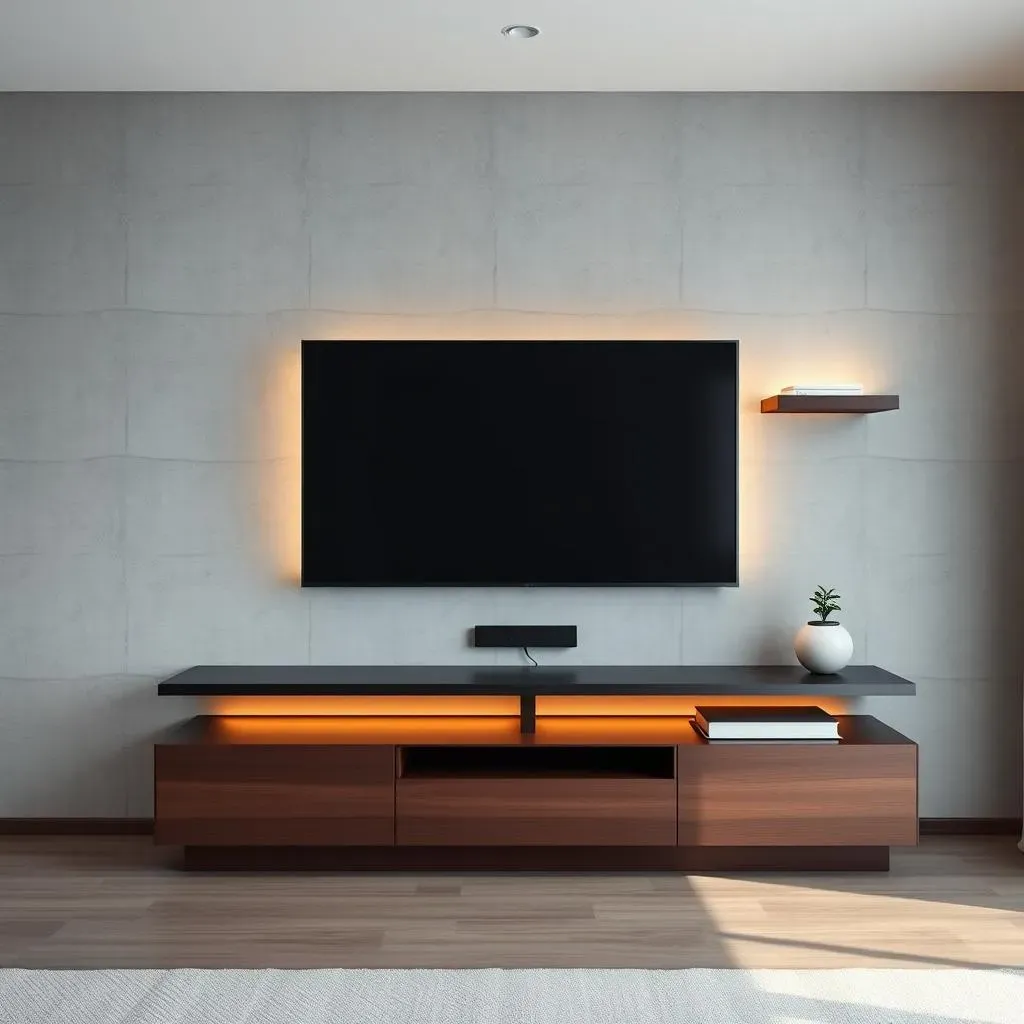
Modern TV Wall Design: Integrating Technology Seamlessly
Hiding the Cables: A Design Imperative
Let's be real, nobody wants to see a tangled mess of cables hanging down from their TV. It's a modern eyesore! Luckily, there are tons of clever ways to hide those pesky cords and create a clean, streamlined look. One option is to run the cables through the wall using a cable management kit. These kits typically include in-wall rated cables and faceplates that allow you to neatly route the cables from your TV to your components without any exposed wires. If you're not comfortable cutting into your walls, you can use cable concealers, which are paintable channels that attach to the wall and hide the cables.
Another great option is to incorporate a media console with built-in cable management. These consoles often have compartments or channels designed to route cables and keep them out of sight. When planning your modern TV wall design, think about where your power outlets and cable jacks are located. If possible, try to position your TV and components near existing outlets to minimize the amount of wiring required. If you need to add new outlets, consider hiring a qualified electrician to ensure the job is done safely and correctly.
Floating Shelves and Media Consoles: Form Meets Function
Floating shelves and media consoles are essential for creating a stylish and functional modern TV wall design. They provide storage space for your media components, gaming consoles, and other accessories, while also adding visual interest to the wall. When choosing shelves and consoles, consider the overall style of your living room. Sleek, minimalist shelves in black or white can create a modern look, while rustic wood shelves can add warmth and character. Think about the size and weight capacity of the shelves to ensure they can safely support your components.
A well-designed media console can serve as a focal point for your TV wall, while also providing ample storage space. Look for consoles with adjustable shelves, drawers, and compartments to accommodate your specific needs. Some consoles even have built-in features like ventilation and cooling fans to keep your components from overheating. Don't be afraid to mix and match different types of shelves and consoles to create a unique and personalized look. For example, you could pair a floating media console with a few floating shelves to create a balanced and visually appealing design.
Here's a quick guide to choosing the right shelves and consoles:
- Floating Shelves: Great for displaying décor and smaller components.
- Media Consoles: Provide ample storage and can hide cables.
- Open Shelves: Offer easy access to components and add visual interest.
- Closed Cabinets: Keep clutter out of sight and create a clean look.
Smart Home Integration: The Ultimate in Convenience
In today's connected world, integrating your TV wall with your smart home system is the ultimate in convenience. Imagine being able to control your TV, lighting, and sound system with your voice or a remote. This is all possible with smart home devices like smart TVs, smart speakers, and smart lighting systems. When planning your modern TV wall design, think about how you can incorporate these devices to create a seamless and integrated experience.
Consider using a smart TV with built-in voice control to easily access your favorite streaming services and apps. You can also use a smart speaker like Amazon Echo or Google Home to control your TV and other smart home devices with your voice. Smart lighting systems like Philips Hue allow you to adjust the color and brightness of your lights to create the perfect ambiance for movie night. By integrating these technologies into your TV wall, you can create a truly immersive and personalized entertainment experience.
Choosing the Right Materials and Colors for Your TV Accent Wall
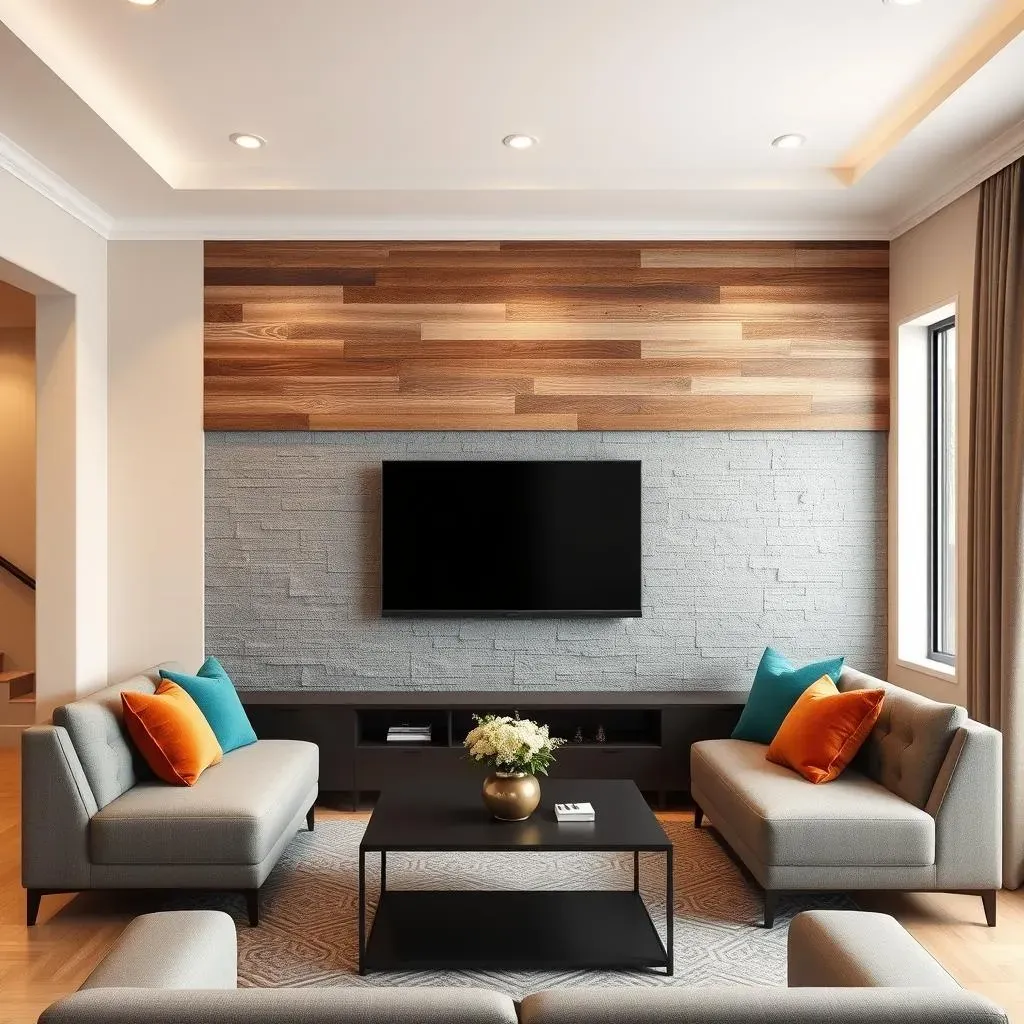
Choosing the Right Materials and Colors for Your TV Accent Wall
Material Matters: Durability and Style
so you're ready to dive into choosing the right materials and colors for your TV accent wall. First, let's talk materials. This isn't just about looks; it's about longevity and how well the material will hold up over time. Think about the wear and tear your wall will endure. If you have kids or pets, you might want to steer clear of delicate materials like fabric or wallpaper that can easily be stained or scratched. Instead, opt for more durable options like wood, stone, or tile that can withstand daily use.
Also, consider the overall style of your living room. Do you want a rustic, modern, or traditional look? The material you choose will play a big role in achieving that aesthetic. Reclaimed wood is perfect for a farmhouse vibe, while sleek, polished concrete is ideal for a modern, industrial space. Don't be afraid to mix and match different materials to create a unique and personalized look. For example, you could pair a brick accent wall with a metal-framed TV for a cool, edgy contrast.
Here's a breakdown of popular materials and their pros and cons:
Material | Pros | Cons |
|---|---|---|
Wood | Warm, versatile, adds texture | Can be prone to scratches, requires sealing |
Stone | Durable, adds natural beauty | Can be expensive, heavy to install |
Tile | Easy to clean, water-resistant | Can feel cold, grout requires maintenance |
MDF | Affordable, smooth surface for painting | Not as durable as solid wood, can warp in humid environments |
Color Coordination: Harmonizing with Your Décor
Now, let's move on to color! This is where you can really let your personality shine. When choosing the right materials and colors for your TV accent wall, it's important to consider the existing color palette of your living room. You want to choose a color that complements your furniture, flooring, and other décor elements. A good rule of thumb is to choose a color that's either a shade lighter or darker than your existing walls. This will create a subtle contrast without being too jarring.
Don't be afraid to experiment with bold colors, but be mindful of the overall effect. A bright red or orange accent wall can add a pop of energy to a neutral room, but it can also be overwhelming if not used carefully. If you're unsure, start with a more muted color like gray, beige, or navy blue. You can always add pops of color with artwork, accessories, and throw pillows. Remember, the goal is to create a cohesive and harmonious look that you'll love for years to come.
Here are some color palette ideas to get you started:
- Neutral Tones: Gray, beige, white, cream (creates a calming and sophisticated look)
- Warm Tones: Brown, tan, gold, rust (adds warmth and coziness)
- Cool Tones: Blue, green, purple (creates a relaxing and serene atmosphere)
- Bold Colors: Red, orange, yellow (adds energy and excitement, use sparingly)
Transform Your Space: The Perfect TV Accent Wall Awaits
From sleek modern designs to cozy DIY projects, the world of TV accent wall ideas offers endless possibilities to elevate your living space. By carefully considering materials, colors, and your own personal style, you can create a stunning focal point that seamlessly integrates your TV into your home décor. Don't be afraid to experiment, get creative, and transform that blank wall into a reflection of your unique taste. With the right inspiration and a little effort, your dream TV accent wall is within reach.
